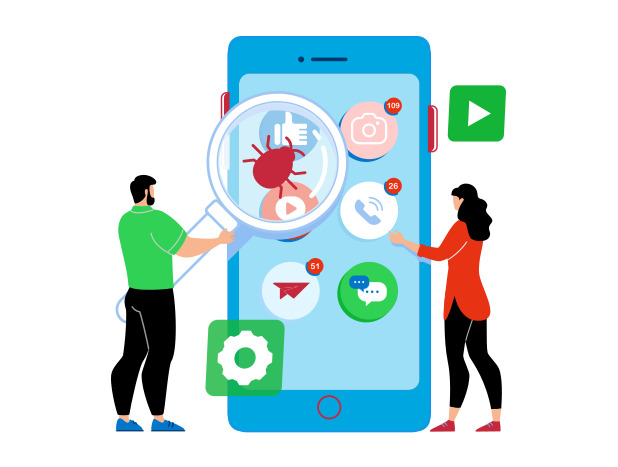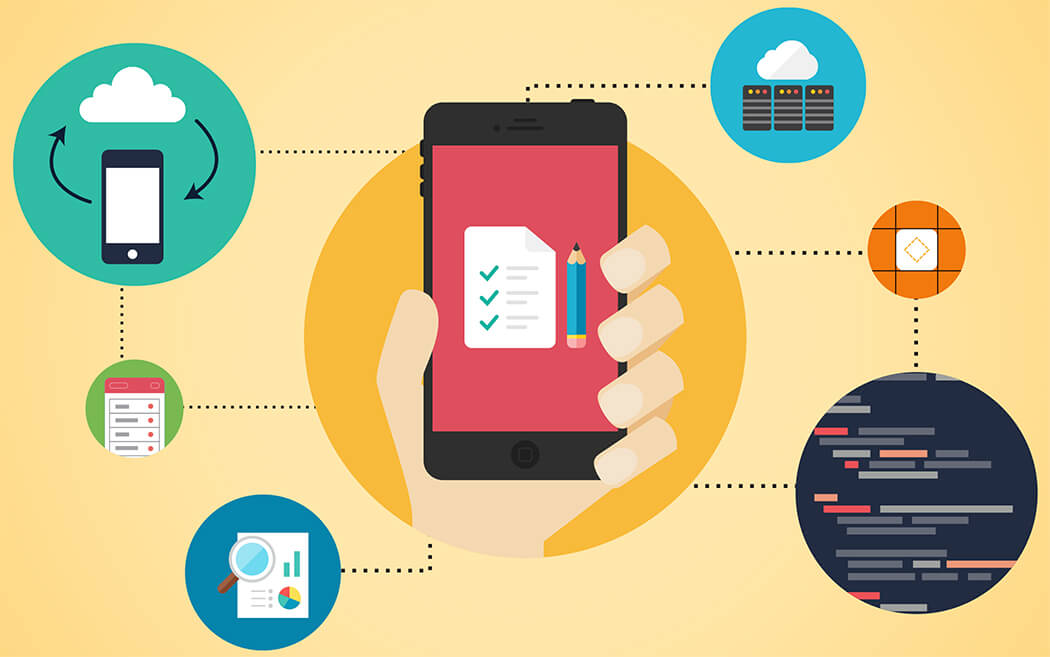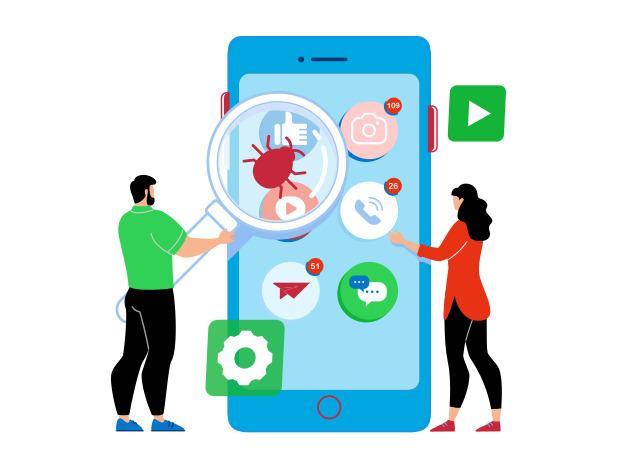Mobile applications play a pivotal role in today's digital landscape, offering convenience and accessibility to users worldwide. However, with the increasing prevalence of cyber threats and regulations governing data protection, ensuring information security compliance within mobile apps is paramount.

As Valency Networks, we understand the critical importance of ensuring that mobile applications comply with relevant regulations and standards to safeguard sensitive data and maintain trust with users. Here's how we approach mobile apps and compliance:

We stay updated with the latest regulatory frameworks applicable to mobile applications, including GDPR, HIPAA, PCI DSS, and industry-specific regulations. Understanding these frameworks helps us ensure that our clients' mobile apps meet compliance requirements.
We conduct comprehensive assessments of mobile applications to evaluate their compliance with relevant regulations and standards. This includes reviewing data handling practices, security controls, and privacy policies to identify areas of non-compliance.
We help organizations implement robust data protection measures within their mobile applications to safeguard sensitive information. This includes encryption, access controls, and secure transmission protocols to protect data at rest and in transit.
We advocate for privacy by design principles to be integrated into the development lifecycle of mobile applications. By prioritizing user privacy from the outset, organizations can minimize the risk of non-compliance with data protection regulations.
We assess the security posture of third-party integrations used within mobile applications to ensure that they comply with relevant regulations. This includes vetting vendors, reviewing data processing agreements, and monitoring for compliance updates.
We assist organizations in implementing robust user consent mechanisms within their mobile applications to ensure compliance with consent requirements under regulations such as GDPR. This includes obtaining explicit consent for data processing activities and providing users with control over their personal data.
We recommend regular audits and assessments of mobile applications to maintain compliance over time. This includes conducting periodic reviews of security controls, data handling practices, and privacy policies to identify and address any compliance gaps.
We offer training and awareness programs to educate organizations about compliance requirements and best practices for mobile application development. By empowering stakeholders with knowledge and skills, we help organizations maintain compliance and reduce the risk of non-compliance.
By focusing on mobile apps and compliance, we help organizations navigate complex regulatory landscapes, mitigate compliance risks, and build trust with users. Our holistic approach ensures that mobile applications not only meet regulatory requirements but also prioritize user privacy and data protection.
As Valency Networks, we recognize the critical role of mobile application security in achieving ISO 27001 compliance, a globally recognized standard for information security management systems (ISMS). Here's an overview of mobile application security considerations for ISO 27001 compliance:

Mobile application security measures should align with the requirements outlined in ISO 27001, which include identifying information security risks, implementing appropriate controls, and continuously monitoring and improving security posture.
Conducting a thorough risk assessment of mobile applications is essential to identify potential security threats and vulnerabilities. This involves analyzing the mobile app's architecture, functionality, data handling practices, and potential risks associated with mobile platforms and environments.
Implementing security controls specified in ISO 27001 is crucial to mitigate identified risks and ensure the confidentiality, integrity, and availability of information assets. Mobile-specific security controls may include encryption, access controls, authentication mechanisms, secure coding practices, and secure communication protocols.
Mobile applications often handle sensitive data, such as personal information, financial data, and intellectual property. Implementing data protection measures, such as encryption, data masking, and data loss prevention, helps safeguard sensitive information and comply with ISO 27001 requirements related to data security.
Integrating security into the mobile app development lifecycle is essential to address security concerns from the initial design phase through deployment and maintenance. Adopting secure development practices, such as threat modeling, code reviews, and security testing, helps identify and mitigate security vulnerabilities early in the development process.
Many mobile applications rely on third-party components, libraries, and services, which can introduce security risks. Implementing third-party risk management practices, such as vendor assessment, security reviews, and contractual agreements, helps ensure that third-party components comply with ISO 27001 requirements and do not compromise the security of mobile applications.
Educating mobile app developers, stakeholders, and users about security best practices is essential for maintaining ISO 27001 compliance. Providing security awareness training, conducting security workshops, and promoting a culture of security awareness help raise awareness about mobile application security risks and responsibilities.
Establishing robust security monitoring and incident response capabilities is essential for detecting and responding to security incidents in mobile applications. Implementing monitoring tools, conducting security audits, and developing incident response plans help organizations effectively manage security incidents and maintain ISO 27001 compliance.
By integrating mobile application security practices into the overall information security management framework, organizations can effectively address ISO 27001 requirements and ensure the security of mobile applications. At Valency Networks, we specialize in helping organizations achieve ISO 27001 compliance by providing comprehensive mobile application security services, including risk assessment, security controls implementation, secure development lifecycle support, and ongoing security monitoring and improvement initiatives.
At Valency Networks, we recognize the importance of conducting Mobile App Vulnerability Assessment and Penetration Testing (VAPT) to achieve ISO 27001 compliance, ensuring the security of information assets and compliance with international standards. Here's how Mobile App VAPT contributes to ISO 27001 compliance:

Mobile App VAPT helps organizations identify and assess security risks associated with mobile applications, including vulnerabilities in code, configuration, and third-party integrations. By conducting comprehensive VAPT, organizations can prioritize risks based on their potential impact on information security objectives and compliance requirements outlined in ISO 27001.
Mobile App VAPT assists organizations in implementing and validating security controls specified in ISO 27001, such as access control, encryption, authentication, and security monitoring. By assessing the effectiveness of these controls in mitigating security risks specific to mobile applications, organizations can demonstrate compliance with ISO 27001 requirements related to information security management.
Mobile App VAPT helps uncover vulnerabilities and weaknesses in mobile applications that may pose security risks, including insecure data storage, inadequate authentication mechanisms, insecure communication channels, and insufficient input validation. By identifying and remediating these vulnerabilities, organizations can enhance the security posture of their mobile applications and align with ISO 27001 compliance objectives.
Mobile App VAPT supports organizations in establishing a culture of continuous improvement in information security management, a key principle of ISO 27001. By regularly assessing the security posture of mobile applications through VAPT, organizations can identify emerging threats, vulnerabilities, and security gaps, enabling them to implement timely remediation measures and enhance overall security resilience.
Mobile App VAPT provides organizations with tangible evidence of due diligence in addressing security risks associated with mobile applications, which is essential for ISO 27001 compliance audits and certification. By documenting VAPT findings, remediation actions, and security improvements, organizations can demonstrate their commitment to information security management and regulatory compliance.
Mobile App VAPT raises awareness among stakeholders, developers, and users about the importance of mobile application security and compliance with ISO 27001 requirements. By involving relevant stakeholders in the VAPT process, organizations can foster a culture of security awareness, knowledge sharing, and collaboration, strengthening their overall security posture and compliance readiness.
Mobile App VAPT provides assurance to stakeholders, customers, and business partners about the security of mobile applications and adherence to ISO 27001 compliance requirements. By engaging reputable third-party VAPT providers, organizations can demonstrate their commitment to security excellence and build trust with stakeholders, facilitating business relationships and partnerships.
In summary, Mobile App VAPT plays a crucial role in achieving ISO 27001 compliance by identifying and mitigating security risks associated with mobile applications, validating the effectiveness of security controls, fostering a culture of continuous improvement, and providing assurance to stakeholders. At Valency Networks, we specialize in conducting comprehensive Mobile App VAPT services tailored to the specific needs and compliance requirements of our clients, helping them achieve and maintain ISO 27001 certification while ensuring the security and integrity of their mobile applications.
As Valency Networks, we advocate for the implementation of best practices and recommendations to enhance mobile application security and ensure compliance with industry standards such as ISO 27001. Here are some key best practices and recommendations:

Encourage developers to follow secure coding practices when developing mobile applications, including input validation, output encoding, parameterized queries, and secure authentication mechanisms. Adopt industry-standard coding frameworks and libraries to mitigate common security vulnerabilities.
Ensure that mobile applications are regularly updated with security patches and fixes to address known vulnerabilities and security weaknesses. Establish a process for monitoring security advisories and releases from mobile platform vendors, third-party libraries, and development frameworks.
Implement strong authentication mechanisms, such as multi-factor authentication (MFA), biometric authentication, and strong password policies, to verify the identity of users accessing mobile applications. Enforce least privilege access controls to restrict user permissions and limit access to sensitive data and functionalities.
Use encryption techniques to protect sensitive data stored on mobile devices and transmitted over networks. Employ strong encryption algorithms and protocols, such as AES for data-at-rest encryption and TLS for data-in-transit encryption, to safeguard confidential information from unauthorized access and interception.
Implement secure data storage practices to protect sensitive information stored on mobile devices, such as passwords, encryption keys, and user credentials. Utilize secure storage mechanisms provided by mobile operating systems, such as Android KeyStore and iOS Keychain, to store cryptographic keys and sensitive data securely.
Use secure communication protocols, such as HTTPS, for transmitting data between mobile applications and backend servers. Ensure that all network communications are encrypted and authenticated to prevent eavesdropping, man-in-the-middle attacks, and data tampering.
Conduct comprehensive security testing, including vulnerability assessment and penetration testing, to identify and remediate security vulnerabilities in mobile applications. Employ automated scanning tools, manual testing techniques, and ethical hacking methodologies to assess the security posture of mobile apps and validate the effectiveness of security controls.
Educate users about mobile application security risks, best practices, and safe usage guidelines to minimize the risk of security incidents and data breaches. Provide user training, security awareness programs, and clear guidance on how to identify and respond to security threats and phishing attacks.
Assess the security posture of third-party components, libraries, and services used in mobile applications to mitigate supply chain risks. Conduct thorough vendor assessments, review security documentation, and monitor for security updates and vulnerabilities in third-party dependencies.
Develop and implement an incident response plan to effectively respond to security incidents and data breaches involving mobile applications. Define roles and responsibilities, establish communication channels, and conduct regular tabletop exercises to test incident response procedures and improve readiness.
By adhering to these best practices and recommendations, organizations can strengthen the security of their mobile applications, mitigate security risks, and achieve compliance with industry standards such as ISO 27001. At Valency Networks, we specialize in helping organizations implement these best practices through our comprehensive mobile application security services, including security assessments, secure coding guidance, and security awareness training.
Here's a case study highlighting how Valency Networks assisted a healthcare organization in securing its mobile application and achieving compliance with industry standards such as ISO 27001:

The healthcare organization faced several challenges in ensuring the security of its mobile application:
Handling sensitive patient health information (PHI) raised concerns about data privacy and compliance with healthcare regulations such as HIPAA.
The mobile app was vulnerable to security threats, including data breaches, unauthorized access, and potential exploitation of vulnerabilities in the app's code and configurations.
The organization sought to achieve ISO 27001 certification to demonstrate its commitment to information security management and compliance with industry standards.
Our team performed a thorough assessment of the mobile application, identifying security vulnerabilities, weaknesses, and potential risks to patient data and information security.
We conducted penetration testing to simulate real-world attack scenarios and assess the effectiveness of security controls in mitigating security threats. This involved testing for common vulnerabilities such as insecure data storage, inadequate authentication mechanisms, and insecure communication channels.
Based on the findings of the assessment, we recommended and implemented security controls to enhance the security posture of the mobile application. This included implementing encryption for data-at-rest and data-in-transit, strengthening authentication mechanisms, and improving access controls.
We provided guidance and support to the client in aligning the mobile application's security practices with ISO 27001 compliance requirements. This involved developing policies, procedures, and security documentation to support compliance efforts and demonstrate due diligence.
By identifying and remediating security vulnerabilities, the organization strengthened the security of its mobile application and reduced the risk of data breaches and unauthorized access.
The organization gained confidence in its ability to comply with industry standards such as ISO 27001, demonstrating a commitment to information security management and regulatory compliance.
By securing its mobile application and protecting patient health information, the organization enhanced patient trust and confidence, leading to increased user adoption and satisfaction.
By proactively addressing security risks and compliance requirements, the organization minimized the potential costs associated with data breaches, regulatory fines, and reputational damage.
By collaborating with Valency Networks for Mobile App VAPT services, the healthcare organization successfully secured its mobile application, achieved ISO 27001 compliance, and enhanced patient trust and confidence. Our comprehensive assessment, security controls implementation, and compliance guidance helped the organization mitigate security risks, protect sensitive patient data, and demonstrate a commitment to information security management and regulatory compliance.
Valency Networks provides following service pertaining to this topic.
